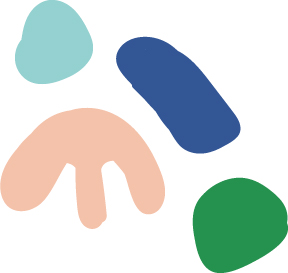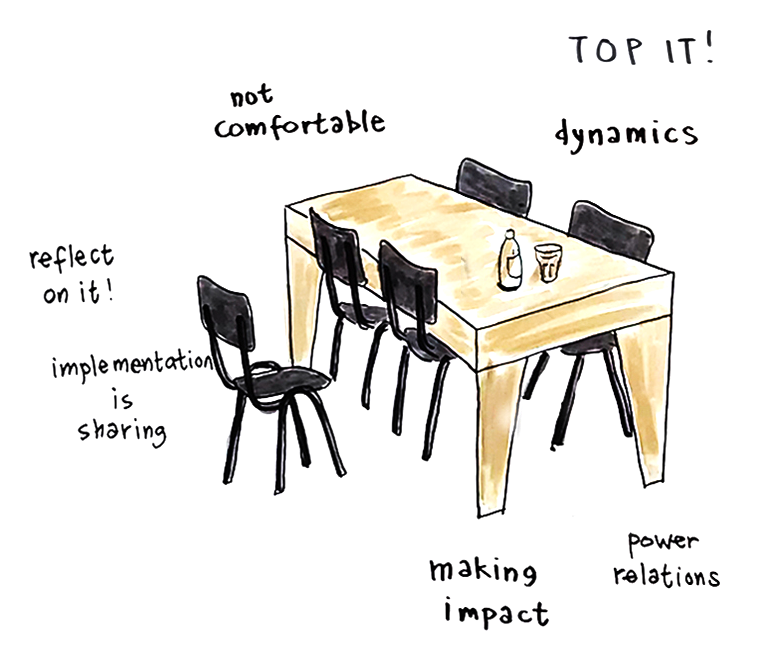
HOW TO IMPLEMENT
The partners of the Global Roots project have continously looked at internal practices and ways of co-creating.
Below you can read about the implementation strategy developed as part of this process – inspired by the way the partners have worked together during the Global Roots project. 


Implementation Strategy: A question is the reflection of an experience.
The aim of the Global Roots Implementation Strategy is to share the experience and knowledge we have gained as partners with a wider audience.
We are examining:
How do we share the experiences each partner had during the workshops they did?
What has each partner learned on the Global Roots journey?
Over a two year period we have had diverse encounters in various collaborations between artists, cultural workers, educators, teachers, students and others. We have learned a lot about sustainability, collaboration, art and so much more. How do we relay these encounters?
Each partner worked in different collaborations and different power relations and hierarchies. Accordingly, with the development of an implementation strategy we are also pursuing the idea of not only making experiences and funds of knowledge tangible through artistic experiments, but also highlighting the fact that every experience is permeated by hierarchies and diverse power relationships. They influence the cooperation between teachers, artists and students and are also often the sources of resistance and conflicts. If one can develop and establish opportunities to reflect upon this, resistance can then be seen as an indicator for the recognition of power relations. The following experiment opens up a perspective into which artistic-educational collaboration can be woven.
Experiment: The great game of power (Augusto Boal)
„A table, six chairs and a bottle. First of all, participants are asked to come up one at a time and arrange the objects so as to make one chair become the most powerful object in relation to the other chairs, the table and the bottle. Any of the objects can be moved or placed on top of each other, or on their sides, or whatever, but none of the objects can be removed altogether from the space. The group will run through a great number of variations in the arrangement.
Then, when a suitable arrangement has been arrived at, one in which, by group consensus, one chair is clearly the most powerful object, a participant is asked to enter the space and take up the most powerful position, without moving anything. Once someone is in place, the other members of the group can enter the space in succession and try to place themselves in an even more powerful position and take away the power the first person established. ” (Boal, Augusto (2002): GAMES FOR ACTORS AND NON ACTORS. Second Edition. London, New York: Routledge. S. 162)

How do I feel after undergoing the experiment? What is this experience telling us? How did I perceive space, group structures and power? And how has the dialog of the group changed after this common experience? The great game of power is an inspiring and powerful exercise about power and space, developed by Brazilian theater artist Augusto Boal (1931-2009), founder of Theatre of the Oppressed.
After having experienced this, one gains a different perception of hierarchies – one can feel them. Reflecting upon the experiences of each participant can bring out a lot of new angles and also influence the dynamics and sensitivity of the group.
As the result of her studies in dramaturgy and acting, the artist Anja Scheffer has been developing a research project on the tools created by Augusto Boal (his politics of experiment and exercise), exploring his artistic strategies as a performative gesture to promote a necessary awareness concerning the power struggle in different contexts of society and, in doing so, Scheffer has organized artistic experiences in the name of a transformative re-contextualization of the common perspectives on social structures.
What is an Implementation Strategy all about?
In our partnership, we wanted each person to develop through personal experience their individual artistic-educational approach to researching what it is to experience sustainability via the arts. Implementation in this sense is about sharing; sharing experiences, knowledge, and personal and individual approaches to an ongoing process for a sustainable world. In our partnership we understand Implementation as a burgeoning and inclusive process. Working with sustainability as a goal means including people, with their ideas and personal approaches based on their knowledge and experiences toward creating a collaborative, sustainable and ongoing living process.

Every Global Roots partner uses the website to share experiments developed from the experiences of collaboration between teachers, artists and students and in the confluence of art, sustainability and education achieved. We believe deeply that experiences with art and artistic strategies alter existing perspectives, as they employ both body and mind to expedite a way to (un)learn various approaches to the relationship between body and mind: to feel, touch, smell, see, hear the world in diverse known and unknown ways.
And, as experience is very individual and personal, a toolkit was created from these different experiences to invite a wider public to have their own personal experiences. We want to inspire you to find your individual approach to relating artistic strategies to a sustainable way of living – see our experiments here.

Each experiment is introduced by a question which unfurls a different view of it. The questions correspond to the reflections on the experiences and can be answered by means of different experiments. Simultaneously, each experiment can be assigned to different questions. The Implementation Strategy emphasizes that there are no right or wrong answers to these questions. The answers will vary depending on the context, interest or focus, making further experimentation important, interesting or necessary for the collaboration. If you are looking for solutions for a sustainable world together, you need a change of perspective with regard to routines and habits. An artistic experience unearths new perspectives, shows additional approaches and changes the focus. We want to encourage the posing of questions and the discovery of a variety of answers arising from such experiments. We would like to invite you to have your own experiences, reflect on them and pose new questions. And we want to encourage people to develop their own artistic-educational projects toward creating a sustainable world.
To conclude: we understand a question as the reflection of an experience.


